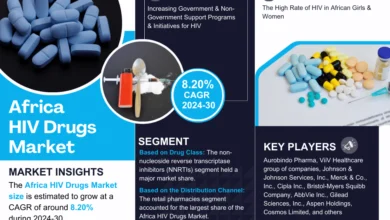What Are the Best Digital Marketing Strategies for SaaS Companies?

The Software as a Service (SaaS) industry is booming, with countless companies offering innovative solutions to streamline business operations, enhance productivity, and drive growth. However, the competitive nature of the SaaS market requires strategic and effective digital marketing to stand out. Here are some of the best digital marketing strategies for SaaS companies to attract, engage, and retain customers.
1. Content Marketing
Content marketing is a cornerstone strategy for SaaS companies. By creating valuable, informative, and engaging content, you can attract potential customers, establish your brand as an industry authority, and drive organic traffic to your website.
- Blog Posts: Regularly publish blog posts that address common pain points, provide solutions, and offer insights into industry trends. Use SEO best practices to ensure your content ranks well in search engine results.
- Whitepapers and Ebooks: Develop in-depth guides and resources that offer comprehensive information on relevant topics. These can be used as lead magnets to capture email addresses.
- Case Studies: Showcase success stories of your existing customers. Case studies provide social proof and demonstrate the tangible benefits of your software.
- Webinars and Videos: Host webinars and create video content that offers tutorials, demos, and expert interviews. Videos are highly engaging and can effectively communicate complex information.
2. Search Engine Optimization (SEO)
SEO is critical for improving your online visibility and attracting organic traffic. By optimizing your website and content for search engines, you can rank higher for keywords relevant to your SaaS product.
- Keyword Research: Identify and target keywords that potential customers are likely to use when searching for solutions your software provides. Use tools like Google Keyword Planner, Ahrefs, and SEMrush.
- On-Page SEO: Optimize your website’s on-page elements, including meta titles, meta descriptions, header tags, and image alt texts. Ensure your content is well-structured and includes relevant keywords naturally.
- Technical SEO: Improve your website’s technical aspects, such as page load speed, mobile-friendliness, and crawlability. A technically sound website enhances user experience and search engine rankings.
- Link Building: Acquire high-quality backlinks from authoritative websites. Guest posting, partnerships, and industry directories are effective ways to build your backlink profile.
3. Pay-Per-Click (PPC) Advertising
PPC advertising allows you to reach your target audience quickly and effectively through paid search and display ads.
- Google Ads: Create targeted campaigns on Google Ads to appear in search results for relevant keywords. Use ad extensions and compelling ad copy to increase click-through rates (CTR).
- Display Advertising: Use Google Display Network or other platforms to place visually appealing ads on websites that your target audience visits. Retargeting ads can help re-engage users who have previously visited your site.
- Social Media Advertising: Platforms like LinkedIn, Facebook, and Twitter offer advanced targeting options to reach specific audience segments. Use these platforms to promote your content, drive traffic, and generate leads.
4. Email Marketing
Email marketing remains one of the most effective channels for nurturing leads and maintaining customer relationships.
- Lead Nurturing: Develop automated email sequences to nurture leads through the sales funnel. Provide valuable content, offer free trials, and highlight customer testimonials to move prospects closer to conversion.
- Customer Onboarding: Create a comprehensive onboarding email series to help new customers get started with your software. Include tutorials, tips, and resources to ensure a smooth onboarding experience.
- Regular Updates: Send regular newsletters to keep your audience informed about product updates, new features, and industry news. Personalized and segmented email campaigns can improve engagement and retention.
5. Social Media Marketing
Social media platforms offer excellent opportunities to build brand awareness, engage with your audience, and drive traffic to your website.
- Content Sharing: Share your blog posts, case studies, and other valuable content on social media. Use eye-catching visuals and engaging captions to attract attention.
- Community Engagement: Participate in relevant groups and forums on platforms like LinkedIn, Facebook, and Reddit. Provide helpful insights and answer questions to establish your brand as a trusted authority.
- Influencer Collaborations: Partner with industry influencers to expand your reach and gain credibility. Influencer endorsements and reviews can significantly impact your brand’s reputation.
6. Freemium Model and Free Trials
Offering a freemium model or free trials can be highly effective in attracting potential customers and showcasing the value of your software.
- Freemium Model: Provide a basic version of your software for free, with the option to upgrade to a paid plan for additional features. This approach lowers the barrier to entry and allows users to experience your product before committing.
- Free Trials: Offer limited-time free trials of your full-featured software. Ensure the trial period is long enough for users to see the value and integrate the software into their workflow. Follow up with targeted email campaigns to encourage trial users to convert to paying customers.
7. Customer Reviews and Testimonials
Positive reviews and testimonials are powerful tools for building trust and credibility.
- Collect Reviews: Actively seek feedback from satisfied customers and encourage them to leave reviews on platforms like G2, Capterra, and Trustpilot.
- Showcase Testimonials: Feature customer testimonials and success stories prominently on your website and marketing materials. Include specific details about the benefits and results achieved with your software.
8. Customer Retention Strategies
Retaining existing customers is just as important as acquiring new ones. Implement strategies to keep your customers engaged and satisfied.
- Customer Support: Provide excellent customer support through multiple channels, including live chat, email, and phone. A responsive support team can significantly improve customer satisfaction.
- Regular Check-Ins: Conduct regular check-ins with your customers to understand their needs and address any issues. Personalized outreach shows that you value their business.
- Product Updates: Continuously improve your software and keep your customers informed about new features and enhancements. Regular updates demonstrate your commitment to providing a high-quality product.
Conclusion
Digital marketing for SaaS companies involves a multifaceted approach that integrates content marketing, SEO, PPC advertising, email marketing, social media engagement, and customer retention strategies. By leveraging these tactics effectively, you can attract and convert potential customers, build lasting relationships, and stand out in a competitive market. Focus on providing value, understanding your audience’s needs, and continuously optimizing your strategies to achieve sustained success.



